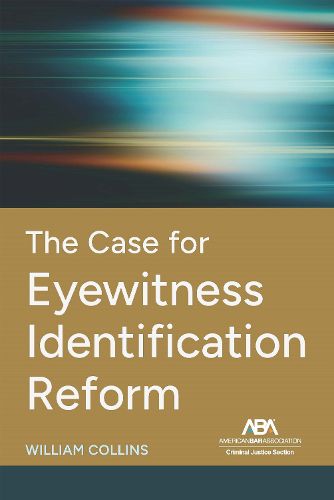Readings Newsletter
Become a Readings Member to make your shopping experience even easier.
Sign in or sign up for free!
You’re not far away from qualifying for FREE standard shipping within Australia
You’ve qualified for FREE standard shipping within Australia
The cart is loading…






The Case for Eyewitness Identification Reform is divided into five chapters.
Chapter 1 lays out the existing eyewitness identification practice in most jurisdictions. Chapter 2 sets forth the law governing eyewitness identification admissibility, as embodied primarily by Manson v. Brathwaite, and how juries are instructed regarding eyewitness identification evidence that is admitted at trial, as embodied primarily by Telfaire v. United States. Chapter 3 lays out what we currently know about memory and perception, insofar as they relate to eyewitness identification. Chapter 4 examines criticisms of Manson and Telfaire, in light of what we know about perception and memory, and outlines past attempts at reforming this body of doctrine to achieve strong deterrence and reduce the number of wrongful convictions. Chapter 5 sets forth the system and estimator variables and makes the case for three-pronged approach to reform outlined above: i.e., barring identification evidence that is either (1) obtained by suggestive means taking into account all system variables or (2) whose probative value does not substantially outweigh its prejudice when taking into account both system and estimator variables, and further (3) instructing juries to consider both system and estimator variables, insofar as they are implicated by the evidence.
$9.00 standard shipping within Australia
FREE standard shipping within Australia for orders over $100.00
Express & International shipping calculated at checkout
The Case for Eyewitness Identification Reform is divided into five chapters.
Chapter 1 lays out the existing eyewitness identification practice in most jurisdictions. Chapter 2 sets forth the law governing eyewitness identification admissibility, as embodied primarily by Manson v. Brathwaite, and how juries are instructed regarding eyewitness identification evidence that is admitted at trial, as embodied primarily by Telfaire v. United States. Chapter 3 lays out what we currently know about memory and perception, insofar as they relate to eyewitness identification. Chapter 4 examines criticisms of Manson and Telfaire, in light of what we know about perception and memory, and outlines past attempts at reforming this body of doctrine to achieve strong deterrence and reduce the number of wrongful convictions. Chapter 5 sets forth the system and estimator variables and makes the case for three-pronged approach to reform outlined above: i.e., barring identification evidence that is either (1) obtained by suggestive means taking into account all system variables or (2) whose probative value does not substantially outweigh its prejudice when taking into account both system and estimator variables, and further (3) instructing juries to consider both system and estimator variables, insofar as they are implicated by the evidence.